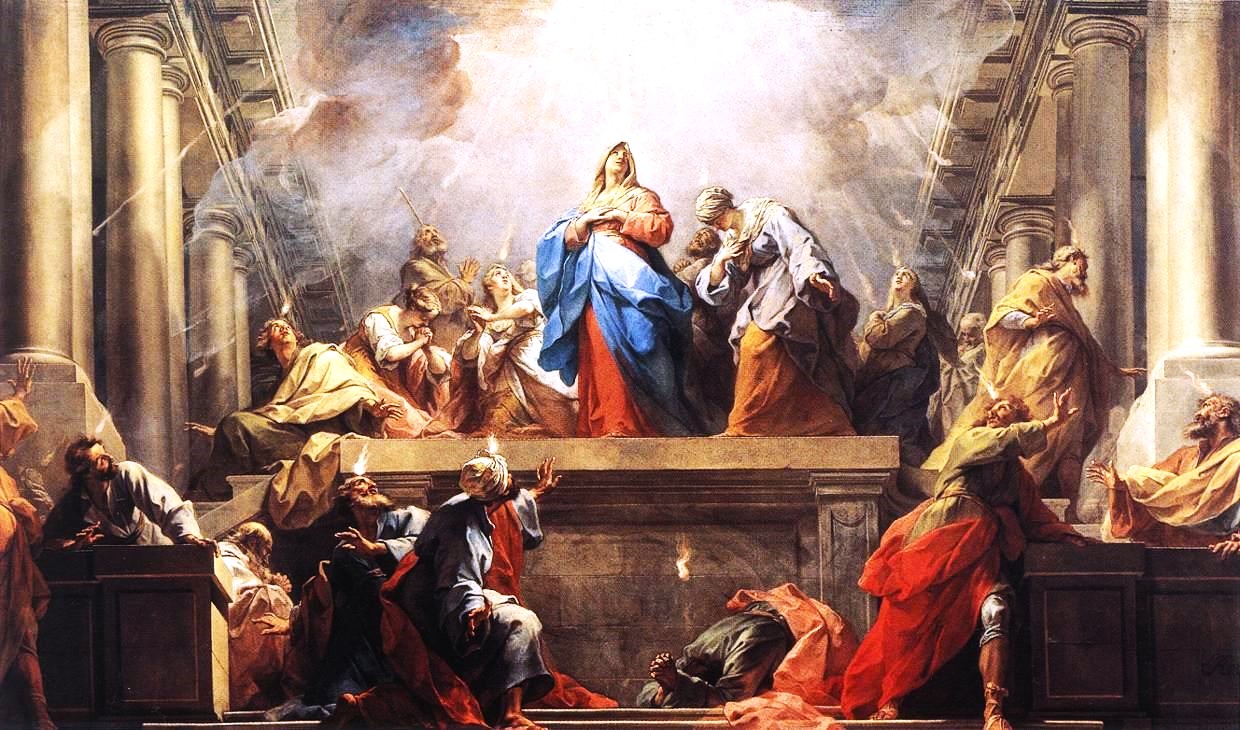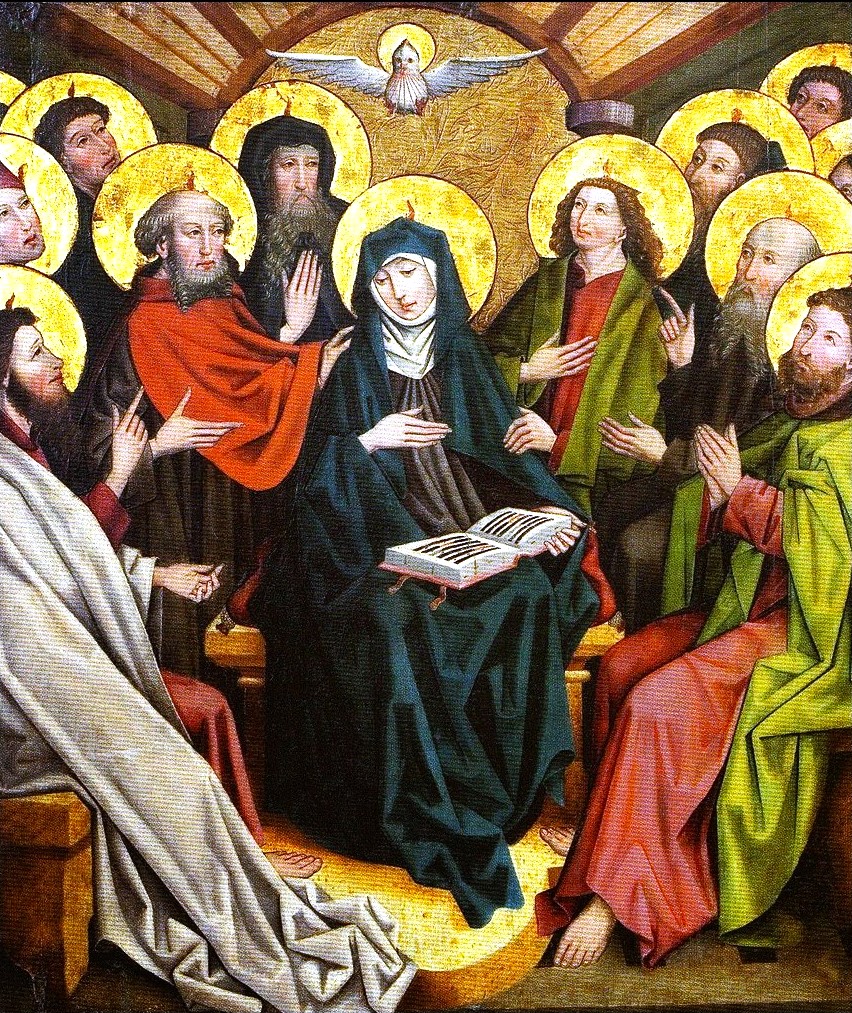Continuation of the Holy Gospel according to John
At that time Jesus said to His disciples, If any one love Me, he will keep My word, and My Father will love him, and We will come to him and will make Our abode in him: he that loveth Me not, keepeth not My words. And the word which you have heard is not Mine: but the Father’s Who sent Me. These things have I spoken to you, abiding with you. But the Paraclete, the Holy Spirit, Whom the Father will send in My Name, He will teach you all things, and bring all things to your mind, whatsoever I shall have said to you. Peace I leave with you, My peace I give unto you: not as the world giveth, do I give unto you. Let not your heart be troubled, nor let it be afraid. You have heard that I said to you: I go away, and I come unto you. If you loved Me, you would indeed be glad, because I go to the Father: for the Father is greater than I. And now I have told you before it come to pass: that when it shall come to pass you may believe. I will not now speak many things with you. For the prince of this world cometh, and in Me he hath not any thing. But that the world may know that I love the Father, and as the Father hath given Me.
A Message From Pope Benedict XVI’s Without Mary There Is No Church, General Audience, Wednesday, March 14, 2012
From the Ascension of the Risen One to the first Christian Pentecost, the Apostles and the Church gathered with Mary to await with her the gift of the Holy Spirit, without whom they could not become witnesses. She who has already received him in order to conceive the Incarnate Word, shares with the whole Church the expectation of the same gift so that “Christ may be formed” (Gal 4:19) in every believer’s heart.
If there is no Church without Pentecost, without the Mother of Jesus there is no Pentecost either, since she lived in a singular way what the Church experiences each day under the action of the Holy Spirit. St. Chromatius of Aquileia comments in these words on the annotation in the Acts of the Apostles: “so the Church had gathered in the upper room together with Mary, the Mother of Jesus, and with his brethren. It is therefore impossible to speak of the Church if Mary, Mother of the Lord is not present…. The Church of Christ is wherever the Incarnation of Christ by the Virgin is preached, and wherever the Apostles, who are the Lord’s brethren, preach, it is there that the Gospel is heard (Sermo 30, 1: SC 164, 135).
The Second Vatican Council wished to give a special emphasis to this bond that is visibly expressed in the praying together of Mary and the Apostles in the same place while they were waiting for the Holy Spirit. The Dogmatic Constitution Lumen Gentium says: “since it had pleased God not to manifest solemnly the mystery of the salvation of the human race before He would pour forth the Spirit promised by Christ, we see the Apostles before the day of Pentecost ‘persevering with one mind in prayer with the women and Mary the Mother of Jesus, and with his brethren’ [Acts 1:14]; and we also see Mary by her prayers imploring the gift of the Spirit, who had already overshadowed her in the Annunciation” (n. 59). The privileged place of Mary is the Church, where “she is hailed as a pre-eminent and singular member of the Church, and as its type and excellent exemplar in faith and charity” (ibid, n. 53).
Hence venerating the Mother of Jesus in the Church means learning from her to be a community that prays: this is one of the essential notes of the first description of the Christian community outlined in the Acts of the Apostles (cf. 2:42). Prayer is often dictated by difficult situations, by personal problems that prompt us to turn to the Lord for enlightenment, comfort and help. Mary invites us to open the dimensions of prayer, not to turn to God only in times of need and to turn to him not only for ourselves, but also in a unanimous, persevering and faithful way, with “one heart and soul” (cf. Acts 4:32).
Dear friends, human life passes through various stages of transition, frequently difficult and demanding, that call for binding decisions, renunciations and sacrifices. The Mother of Jesus was placed by the Lord in crucial moments of salvation history and she knew how to respond with total availability, the fruit of a deep bond with God that developed in assiduous and intense prayer.
Between the Friday of the Passion and the Sunday of the Resurrection the beloved disciple, and with him the entire community of disciples, was entrusted to her (cf. John 19:26). Between the Ascension and Pentecost, she is found with and in the Church in prayer (cf. Acts 1:14). As Mother of God and Mother of the Church, Mary exercises her motherhood until the end of history. Let us entrust to her every phase of our personal and ecclesial lives and not the last of our final transit. Mary teaches us the need for prayer and points out to us how it is only through a constant, deep and loving bond with her Son that we may courageously come out of “our home”, out of ourselves, in order to reach the ends of the earth and proclaim everywhere the Lord Jesus, the Saviour of the world.



